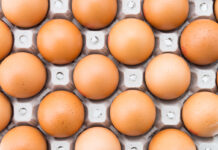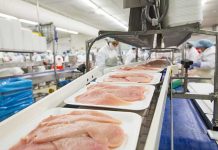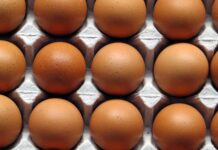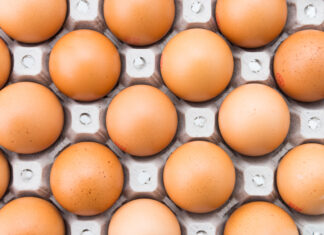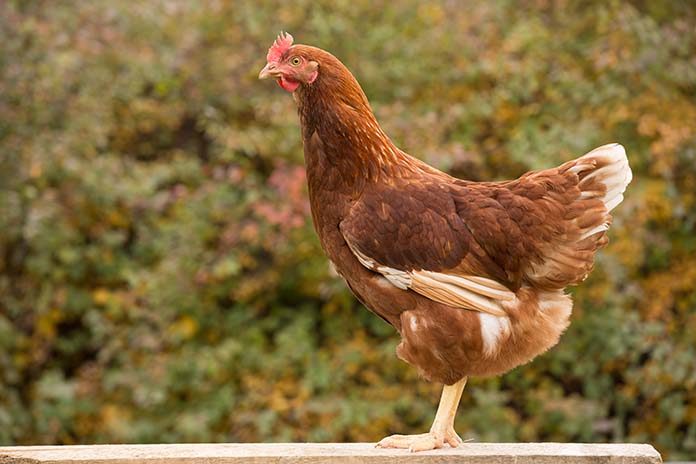
It is well known from former experiments that success in laying sheds is dependent upon success in the pullet rearing sheds. Therefore, the main goal in the pullet’s rearing period is to develop pullets with optimal body weight and body conformation at photostimulation for a long-term and high-level production in the subsequent egg-laying period.
In former studies it has already been pointed out that the relative difference in the initial body weight of the laying hens is maintained to the end of the laying period. It was also observed in these studies that the birds with low-weights began to lay later and their total egg output was lower than that of birds with medium and high weights. In another former study it was also established that the relative difference in the initial body fat content of the hens was also maintained to the end of the laying period.
However, in these former experiments the effect of initial body weight and the effect of initial body fat content were examined separately. In those previous studies when the effect of initial body weight was examined, the initial body composition of the hens was unknown. Equally while in the studies where the effect of initial body composition was tested, the body weight of the hens did not differ from bird to bird. Accepting this, the aim of this study was therefore, in the same experiment, the examination of the effect of initial body weight and body composition of the hens as related to subsequent changes in their live weight, body fat content and egg production.
 Our experiment was carried out with TETRA-SL LL laying hens, which were kept in a closed building at the Poultry Test Station of the Kaposvár University, Faculty of Agricultural and Environmental Sciences, in Hungary. The experiment started at 20 weeks of age, when all of the birds in the experiment were weighed and their body fat content was determined by means of computer tomography (CT) in vivo. Based on the measured values hens were divided into three groups (based on their live weight on the one hand and based on their body fat content on the other). The basic data of the laying hens in the different groups are summarized in Table 1.
Our experiment was carried out with TETRA-SL LL laying hens, which were kept in a closed building at the Poultry Test Station of the Kaposvár University, Faculty of Agricultural and Environmental Sciences, in Hungary. The experiment started at 20 weeks of age, when all of the birds in the experiment were weighed and their body fat content was determined by means of computer tomography (CT) in vivo. Based on the measured values hens were divided into three groups (based on their live weight on the one hand and based on their body fat content on the other). The basic data of the laying hens in the different groups are summarized in Table 1.
Changes in the body fat content of the experimental animals were followed by means of computer tomography in vivo, scanning the hens at 32, 52 and 72 weeks of age. The live weight of the hens was also recorded at the same ages, while their egg production was recorded daily. The effect of initial body weight and body fat content of the hens on the changes in their live weight, body fat content, egg production and egg weight was evaluated by Multivariate Analysis of Variance using the SPSS statistical software package. Examining changes in the live weight of the hens, it was established that only the initial body weight significantly affected this trait during the experimental period. (Table 2).
 The live weight of hens starting egg production with high initial body weights remained higher during the whole testing period, than that of the hens which started egg production with low or medium initial body weights. The difference between the two extreme groups (hens with low and high initial body weight) was statistically proven on all examination days. The initial body fat content had no significant effect on the changes in the live weight of the hens. Regardless of live weight, changes in the body fat content of the hens were not affected significantly by the initial body weight (Table 2).
The live weight of hens starting egg production with high initial body weights remained higher during the whole testing period, than that of the hens which started egg production with low or medium initial body weights. The difference between the two extreme groups (hens with low and high initial body weight) was statistically proven on all examination days. The initial body fat content had no significant effect on the changes in the live weight of the hens. Regardless of live weight, changes in the body fat content of the hens were not affected significantly by the initial body weight (Table 2).
The body fat content of the hens starting their egg production with high initial body fat content was higher during the whole experimental period than that of the hens starting their egg production with low or medium initial body fat content. The difference between the two extreme groups (hens with low and high initial body fat content) was statistically proven on all examination days. The egg production levels of the laying hens with low initial body weight was lower than that of the hens with medium or high initial body weight at 52 and 72 weeks of age, but these differences were statistically not proven (Table 3). The egg production levels of the hens with high initial body fat content was lower than that of the hens with medium or low initial body fat content at 52 and 72 weeks of age (Table 3). The differences between the two extreme groups were statistically proven in this case (P<0.05).
The weight of eggs was lowest in the hens with medium initial body weight on all examination days, but it did not differ significantly from that of the hens with low or high initial body weight (Table 3).
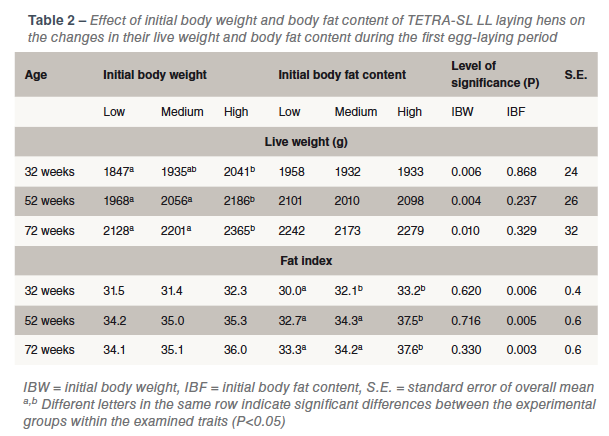 The body fat content of the hens did not seem to influence, in a significant manner, egg weights even when it was decreasing when average egg weights were studied with increasing body fat levels in the hens from 32 to 72 weeks.
The body fat content of the hens did not seem to influence, in a significant manner, egg weights even when it was decreasing when average egg weights were studied with increasing body fat levels in the hens from 32 to 72 weeks.
Based on these results it was concluded that the optimal body conformation at photostimulation seems also to be important for the successful egg production.
The work is supported by the EFOP-3.6.3-VEKOP-16-2017-0008 project. The project is co-financed by the European Union and the European Social Fund.


